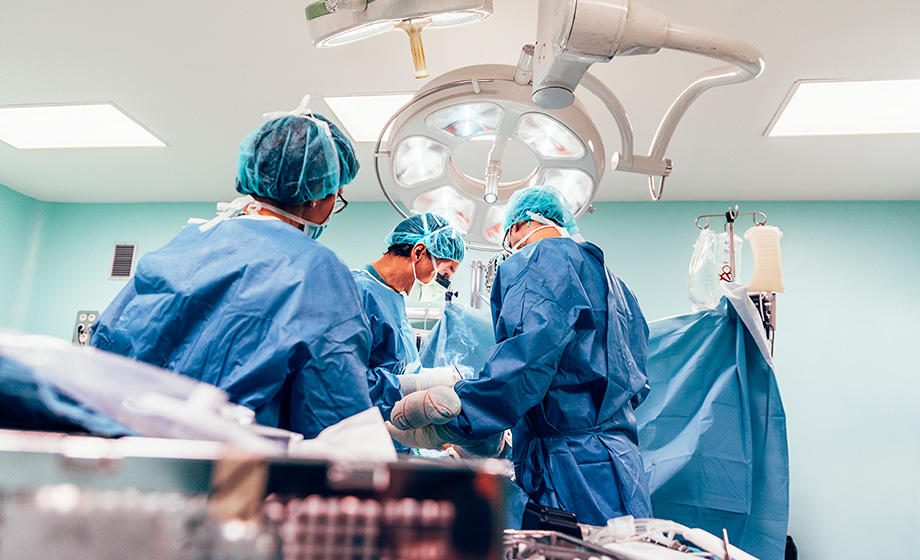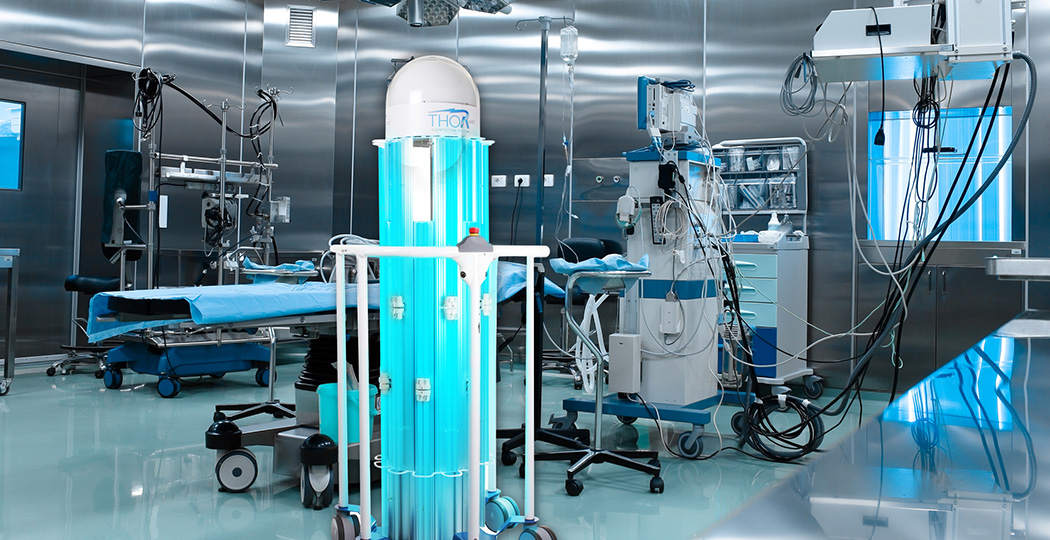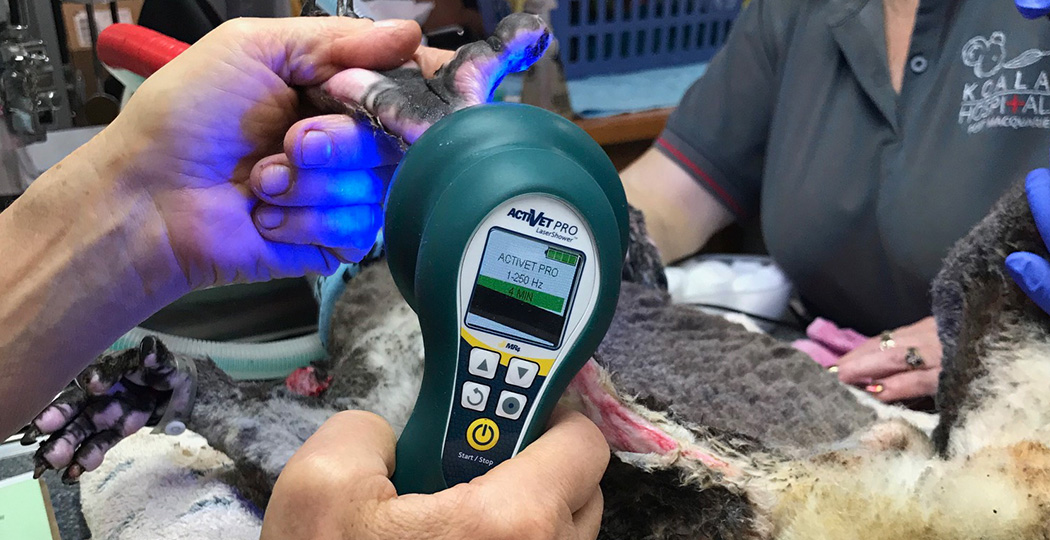About ParagonCare
ParagonCare is comprised of 4 strategic pillars: Specialty Diagnostics, Specialty Devices, Capital and Consumables and Service and Technology
Mary-Jane O’Sullivan is the General Manager of the Diagnostics pillar within Paragon Care. Mary-Jane joined Paragon in April 2018 when Immulab (previously a business unit of CSL) was acquired by Paragon Care.
Q: What trends are you seeing in the broader Diagnostics industry?
A: Diagnostics is clearly a growth industry, with innovation and increased regulation driving demand for in vitro diagnostics (IVDs) and associated equipment in both the clinical and R&D markets.
Rather than simply being a way to identify which patients have a specific disease, diagnostics are now used to support the clinical development of drugs, predict disease before symptoms begin, forecast the progress of a disorder, and identify patients who are most likely to respond (or not respond) to specific treatments.
Over the past year, there has been a focus on increasing Australia’s ‘Sovereign Manufacture’ capabilities to reduce reliance on overseas supply chains for essential products.
Immulab is a local manufacturer of Class III and Class IV IVDs used in blood banks. In addition, Immulab has the capability to manufacture other diagnostics products and has recently increased manufacturing of Viral Transport Media, which is used in COVID testing.
Q: What do you see as the major growth opportunities in the Diagnostics pillar over the next year?
A: The Diagnostics pillar is well positioned for growth over the next year through both the addition of new agencies and underlying organic growth through operating efficiencies and cross-selling. We have a diverse and innovative product portfolio designed to meet the growing demand.
A new agency, Immucor Transplant, was onboarded from 1st March (see above article) and we have had ongoing success in recent tenders.
We are also focused on the growth and expansion of existing agencies. The Diagnostics pillar is comprised of Immulab, Immuno and LabGear and these individual businesses have now been successfully consolidated, which has delivered operational synergies and efficiencies. This consolidation now provides a solid platform to cross sell the complementary Diagnostic product range across pathology, R&D and tertiary sectors by leveraging existing relationships and maximising coverage.
Customers are responding very positively to this strategy and the next step will be to look for cross-selling opportunities with other pillars within Paragon Care.
Q: What are the opportunities for expansion in China over the next few years?
A: We view China as an exciting growth opportunity for the Diagnostics pillar and Immulab currently sells a range of contract manufactured and raw materials into China. The market demand in China is huge, with ongoing growth driven by innovation and regulation.
The longer-term growth strategy is to establish some strategic partnerships to expand sales into China. Immulab has appointed the first distribution partner in China and is now working towards the registration of key products.

ParagonCare delivered a solid first half financial result with improved profitability and cashflow. Our diversified product portfolio generated revenue stability, down only 5% on the previous corresponding period due to the disrupted healthcare market. EBITDA was up a significant 63% to $14.7m, reflecting the improved margins and streamlined operations. Gross margins were up slightly to 38.7% and we delivered over $7m in annualised savings.
Operating cashflow increased to $15.5m due to the significant reduction in days debtors and inventories. In the first half, we also paid out over $14m to vendors in earn-outs from previous acquisitions. As at March 2021, there are no further vendor payments outstanding, thus leading to future improvements in cashflow moving forward.
Our focus is now on organic growth and continuous improvement to drive revenue growth and operational efficiency across all four pillars. We expect further opportunities to capitalise on our existing local manufacturing capability and we are well positioned to benefit from growth in aged care moving forward.
ParagonCare CEO, Phil Nicholl, recently discussed the first half results with Finance News Network (FNN).

Investor News
ParagonCare has recently expanded its product portfolio in Diagnostics through a new supply contract for transplant products. This new product offering will contribute to the underlying growth in the Diagnostics division over the years ahead.
Immulab is a leading manufacturer and provider of blood banking reagents and solutions in Australia and the Immulab business sits within ParagonCare’s Diagnostics pillar. Immulab is the only Australian owned manufacturer of In Vitro Diagnostics (IVDs) for Blood Banks.
Immucor is a leading provider of transfusion and transplantation diagnostics products globally and is dedicated to matching donors with patients in need of blood or an organ.
In 2014, Immulab was appointed the exclusive distributor for Immucor Transfusion Diagnostics in Australia and New Zealand. Since that time, Immulab has grown the Immucor transfusion business significantly. In fact, since 2016 blood donations in Australia have been screened using Immucor automation and reagents – that is over 1 million donations each year!
Immulab has now expanded its exclusive distribution relationship with Immucor in Australia and New Zealand to include Transplant Diagnostic products, commencing in early 2021. The transfusion and transplant diagnostic product ranges are highly complementary as they are utilised to ensure the right match for patients in need of blood or an organ.
Immucor’s transplant diagnostics division develops, manufactures and sells a complete line of assays to perform pre-transplant typing and screening and post-transplant monitoring. In Australia, there are over 1,700 people waiting for their life-saving second chance, a transplant. With the right match, the transplant can transform a life.
The extension of this distribution relationship validates ParagonCare’s market leading position as a distributor of choice for global manufacturers who want to expand in the Australian and New Zealand market.

THOR UVC® is a UVC emitting robot designed for all areas of the hospital and healthcare environment and has been embraced by the orthopaedic surgeons at the Sydney Adventist Hospital.
Head of Orthopaedic surgery Dr Rod Brooks is a key advocate for the new system as he sees this as an extra safeguard to the usual cleaning routine. This is particularly important when bone or joint infections can be so debilitating and hard to eradicate.

One of our experienced Vet Team, Simone Taylor, spent yesterday at the Koala Hospital in Port Macquarie teaching staff how to use the Multi Radiance ACTIVet Laser on the Koala burns patients.
REM SYSTEMS has loaned an ACTIVet Laser to the Koala Hospital for a few weeks to help speed up their healing. The Hospital changes the bandages every three days which requires these beautiful animals to be anaesthetised to help with pain management.
While undertaking this extremely delicate procedure under anaesthetic, these injured koalas are having their wounds lasered at the same time.
It’s fantastic to see how the REM SYSTEMS veterinary products can make a difference in areas you wouldn’t expect.
Visit our Veterinary product portfolio for Therapeutic Lasers

It’s incredible to consider the degree to which medical technology has evolved over the past few decades. Medical devices are now cheaper, more readily available, and more accurate than ever before, to the benefit of both patients and clinicians. A significant outcome that has arisen from increased investment in research and development is the point of care device.
Equipment that was previously loud, bulky, and required excessive power to run has now been reduced to the size of a portable, handheld device. This has improved the ability of clinicians to diagnose and treat patients in an efficient manner, which is, after all, the goal of healthcare.
Point of care devices are a must for any healthcare facility that requires rapid result turnarounds or sees large numbers of patients per day. Paragon Care’s extensive portfolio of critical care products includes point of care (POC) ultrasound machines, favoured by clinicians who require a balance between speed and accuracy of results.
What is point-of-care testing?
As the name suggests, point-of-care testing is diagnostic testing completed at the side of the patient. The sample is taken and the results obtained a short time later.
Point-of-care testing is not necessarily a new concept. Diabetics, for example, have been using point-of-care devices to test their blood sugar levels since the 1970s, paving the way for the wide range of point-of-care devices that are available on the market today. Rapid antigen tests are another example of a point-of-care diagnostic device. These portable products can be purchased over the counter and have recently proved critical in face of the Covid-19 pandemic.
Point-of-care testing is not only used in the medical industry. Veterinarians, particularly those who work in remote or rural locations, also have great use for these devices.
Point-of-care vs laboratory testing
Point-of-care testing is often spoken of in contrast to traditional laboratory testing. For a long time, the only way of obtaining important diagnostic information was by sending results away to a separate laboratory, where it joined the queue of other samples waiting to be studied. The entire process of taking a sample, having it tested, and getting the results back to a clinician could take weeks.
Critically ill patients often don’t have this time to spare. Point of care products, therefore, were quickly adopted as important critical care products.
Point-of-care testing can also be performed by those who do not possess formal laboratory training, such as nurses. The results are typically quite easy to interpret and only require a small sample — a pinprick of blood or a small amount of urine, for example — for the test to be performed.
There are some disadvantages to point-of-care devices. The environment in which you are testing, for example, may not be as sterile as a formal laboratory. Depending on the type of test, point-of-care results can be more expensive to obtain than traditional laboratory testing. However, in most situations, point-of-care testing plays a valuable role in ensuring patients get the care they need in as short a time as possible.
Paragon Care — leaders in innovation
Here at Paragon Care, we pride ourselves on our innovative and forward-thinking attitude. We see advancements such as point-of-care devices as being critical to propelling the medical equipment industry forward, and as such, strive to provide our customers with the latest in equipment and supplies.
Our range of critical care products includes the BK Medical point-of-care ultrasound system, which pushes the boundaries of medical imaging technology. We are always looking for new products to add to our portfolio and ways of further supporting our valued customers.
Contact our friendly and knowledgeable customer service team today to find out more.

Critical or intensive care has been growing and changing over the years since its original inception back in the 1950s during the widespread outbreak of polio. Critical care was originally invented due to necessity, as a way to find solutions to difficult problems resulting from lack of equipment, a devastating number of patients, and difficulty treating the condition.
During this outbreak, new medical devices were invented to help circumvent these issues, and the precursor to the modern-day ventilator was invented at this time. A device that we still use in hospitals today. This shows that critical care is a fast-moving industry and that changes in the medical field come quickly during times of strife especially. While the nature of critical care has changed majorly since the 1950s, we have these original strides to thank some of our most used techniques and technologies today. Even important methods of infection control were invented a very long time ago, most during the outbreak of Spanish Influenza in 1918 where some of the first-ever cases of quarantine and isolation were recorded.
So many of our current mainstays in the medical industry have origins many years in the past, and keeping up to date with what new changes may be on the horizon is important in staying ahead of the curve. Both in the interest of providing the best possible care to patients and in creating new methods that will be used for years to come.
At Paragon Care, we want to help dedicated surgeons and doctors to provide patients with the most up-to-date care by offering the newest medical devices available, and by always keeping a watchful eye for new advancements in the industry. Medical device companies are a key pillar in making innovation accessible to all, and we are a part of that.
Modern Critical Care
There have been numerous technological advancements since the 1900s, so while many of the original techniques are still being used, a critical care unit in Australia looks completely different to how it would have all those years ago. Where everything once had to be handled manually, we now benefit from healthcare equipment such as infusion pumps and ECG machines that provide life-giving care to patients across the country.
As most patients classified as critical care have difficulty or are completely unable to ingest nutrients orally, they will generally rely on enteral feeding or infusion therapy to guarantee that they are still getting the nutrients they need. Whether due to mouth or jaw injuries, or unconsciousness, patients need to be provided with nutrients, and it is thanks to these advancements in critical care that we can help them. Medical device companies like Paragon Care will offer a complete range of feeding products and infusion pumps for those patients who need to ingest medication, nutrients or fluids in this manner. While there is a risk of infection within a critical care ward as there is in most areas of a medical facility, hospital-grade disinfection products like those offered by Paragon Care mitigate this risk across the board, providing essential protection against infection for both patients and doctors alike.
Another important pillar of today’s critical care ward is anaesthesia for those patients in significant pain. Anaesthesia is used across almost all medical facilities, and where it is used delivery systems, needle guides, and specialty covers to reduce the risk of infection are all required to ensure that it is being used correctly.
All of these current and essential products are available from Paragon Care and located in our critical care portfolio on our website. But these are just the critical care devices we use today, what advancements are we likely to see when looking to the future?
The possible future of Critical Care
Looking back on the origins of critical care and so many other advances in the medical industry, it’s hard to imagine that the Covid-19 pandemic isn’t going to be the catalyst for many changes and advancements in the industry within the next few years.
The pandemic put significant pressure on hospital teams, teaching the importance of proper infection control and isolation. It also forced facilities to learn how to cope with unprecedented influxes of patients during its height, and some hospitals are still overfilled to this day. Luckily, there will be much that was learned from this, and new advancements will be on the way to help prevent future outbreaks or pandemics from hitting medical teams quite as hard.
We have also seen some interesting developments in Artificial Intelligence concerning the medication industry. These advancements may be applied to monitoring devices, making them more sensitive and faster to provide alerts upon changes in a patient's condition. This could be extremely valuable in future, providing clinicians with more time to make informed decisions about how to proceed with treatment. It will be interesting to see where this goes and how it may affect the industry as we currently know it.
The future of critical care in Australia is likely to see some dramatic changes due to large strides in both the AI and robotics industries, along with important lessons learned due to the Covid-19 outbreak, and we can guarantee that Paragon Care will be there providing support and quality medical devices even as these changes begin.

At Paragon Care we understand that providing pain-free care to your patients is of utmost importance, so we offer several regional anesthesia and postoperative pain management options to suit all patients. Therefore, choosing a well-known and respected company to provide you with pain management solutions is of utmost importance.
It’s also essential to ensure you have a wide range of pain management options available in your facility as different procedures will require different ways to manage the pain. Below is a list of just some of the options we have available from our critical care department in Australia and New Zealand
Analgesia
Analgesic medication is one of the most used forms of pain management after and during medical procedures, the way that that it is administered is an important factor in how it can be best utilized. Intravenous (IV) administration is more commonly the route of choice in critically ill patients because it guarantees consistent absorption of the medication. Deciding between the intermittent or continuous dosage of the medication will depend on factors such as the frequency and severity of pain and the strength of the analgesic medication.
Cold/Heat Compression Therapy
Cold/heat compression therapy is a convenient pain relief method for post-surgery that allows the patient to avoid any strong medication. Medical device companies will offer a convenient bracing system that combines thermotherapy and compression to reduce pain, relieve inflammation and help recovery. It is best used when the patient is already on the road to recovery as a way to limit the pain and assist with movement.
Ambulatory Infusion Pumps
Non-narcotic infusion pumps can provide up to 5 days of pain relief while reducing opioid use as patients are recovering. This means that patients can be both comfortable after surgery and capable of activity as they move through recovery.
An ambulatory infusion pump is a small, portable pump that delivers medication via a thin catheter. This method has several advantages for pain control, firstly it ensures that the patient receives a steady infusion of drugs, with reliable absorption if inserted in unaffected tissue, and also allows doctors to administer a combination of drugs in a manner that is more convenient than repeated and painful injections. It is a helpful method of avoiding the need for any further intravenous access.
Conclusion
So if you are still looking for medical device companies to purchase your pain control solutions from, get in contact with the helpful team at Paragon Care so we can give you a full rundown of all the available treatment options. Providing adequate pain relief is essential in the medical field, so you should always ensure that you are purchasing from a well-known and trusted critical care provider in Australia just like Paragon Care.

There are many different ways to diagnose possible urology issues in patients, at Paragon Care we offer many diagnostic tools that can be used to gain results on site and make clinical decisions for positive patient outcomes more quicker. As with everything in healthcare, the faster a patient is diagnosed, the sooner you can start treatment, so having all diagnosis options available is key to improving your results.
Have a read below to see more about some of the most common urology solutions available, all of which we can provide the equipment required to perform:
Urine Analysis
Kidney, Ureter, Bladder (KUB) X-ray
Bladder Biopsy
Computed Axial Tomography (CT) scan
Intravenous Pyelogram/Urogram
Abdominal/Renal Ultrasound
Prostate Biopsy
Cystoscopy
Uro-dynamics Testing
At Paragon Care, we offer healthcare products in Australia that are designed to help make the process of diagnosing urology issues faster than ever. If your facility needs to perform any of the above tests, then contact our friendly team for options on what urology solutions we can provide to help streamline your diagnostic process.

Purchasing medical and surgical supplies online can be hard, particularly if you don’t have a lot of experience in this area or don’t quite know what you’re looking for. These types of supplies also represent a significant investment for your clinic, so you want to be sure that you’ve made the right choice.
Since our establishment in 2008, Paragon Care has helped countless healthcare facilities make informed decisions about their medical supply needs. To help those just starting their research, we’ve put together some of the most frequently asked questions that customers have about purchasing medical and surgical supplies. These include questions you might want to ask yourself, as well as information that it’s important to know before partnering with an equipment provider. Of course, our team of trained and experienced customer service consultants are available to provide advice tailored to your situation and needs.
Should I purchase new or second-hand surgical equipment?
This is one of the biggest questions that healthcare managers face when purchasing capital equipment. If you’re working with a limited budget or are needing to purchase several devices at the same time, investing in second-hand equipment is clearly attractive because of the lower price tag.
However, there are extra considerations you will need to take into account should you go down the second-hand route. To start with, it might not be possible to obtain warranty for a second hand device. The supplier may not offer maintenance and repair. And to state the obvious, you’re probably purchasing a device with a shorter life-span.
Paragon Care offers new equipment, along with full maintenance, repair, and warranty. We support our customers through the entire life-cycle of their asset and believe that this approach makes paying full price worthwhile.
What is the return on investment for this equipment?
Another popular question that you will need to ask yourself at the beginning of your research. Perhaps you’ve had your eye on a particular piece of equipment for quite a while, but feel that the price-tag is prohibitive.
The truth of the matter is that medical and surgical equipment and supplies can be expensive. One way to justify the cost is working out the return on investment. Calculate how often you will be using the equipment, whether you will be able to expand the types of services you offer, and what you can charge for using it.
Healthcare isn’t about making a profit but having these facts and figures can help you make an informed decision that won’t put undue pressure on your budget.
How often will I need to restock my supplies?
In the case of disposable consumables, keeping track of stock levels is a difficult and critical task. These days, there are a range of tools you can harness to help simplify the process.
Having a digital system in place to track and monitor stock levels will be of significant help when it comes to planning both logistics and budgets.
A question like this is best discussed with Paragon Care’s experienced customer service representatives, who can provide advice tailored to your clinic size and the types of services you offer.
Do you offer maintenance and repair?
Before purchasing equipment from a supplier, be sure to check whether they offer appropriate maintenance and repair services. Medical devices, like any other type of equipment, are prone to breakdowns. Should something go wrong with your equipment, being able to call on Paragon Care’s trained engineers provides invaluable peace of mind.
What kind of warranty is available?
Another important tip — don’t purchase medical and surgical supplies unless warranty is available. For the most part, this will rule out second-hand equipment. But given the funds you will be investing in equipment, warranty is a must-have.
Warranty is not only important from a financial perspective, it also protects your patients. Should a device breakdown, replacing it without a warranty can take a significant period of time. Patients who are waiting for a diagnosis or treatment might have their appointments pushed back or cancelled altogether.
Paragon Care offers warranty options to protect everyone, from your financial team to your very important patients.
How can I see your product portfolio?
Like many medical suppliers, Paragon Care’s online product catalogue and information is available to health professionals only. If you would like to learn more about our product range, please submit a Product Information Request today.
If you have any further questions regarding our range of medical and surgical supplies, reach out to Paragon Care’s friendly team today.
